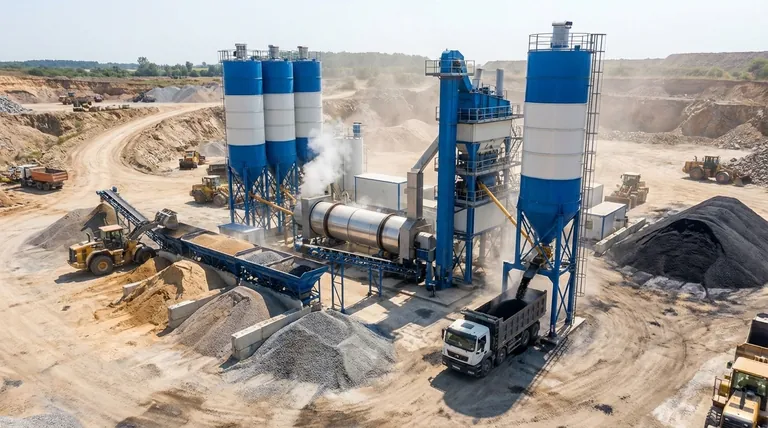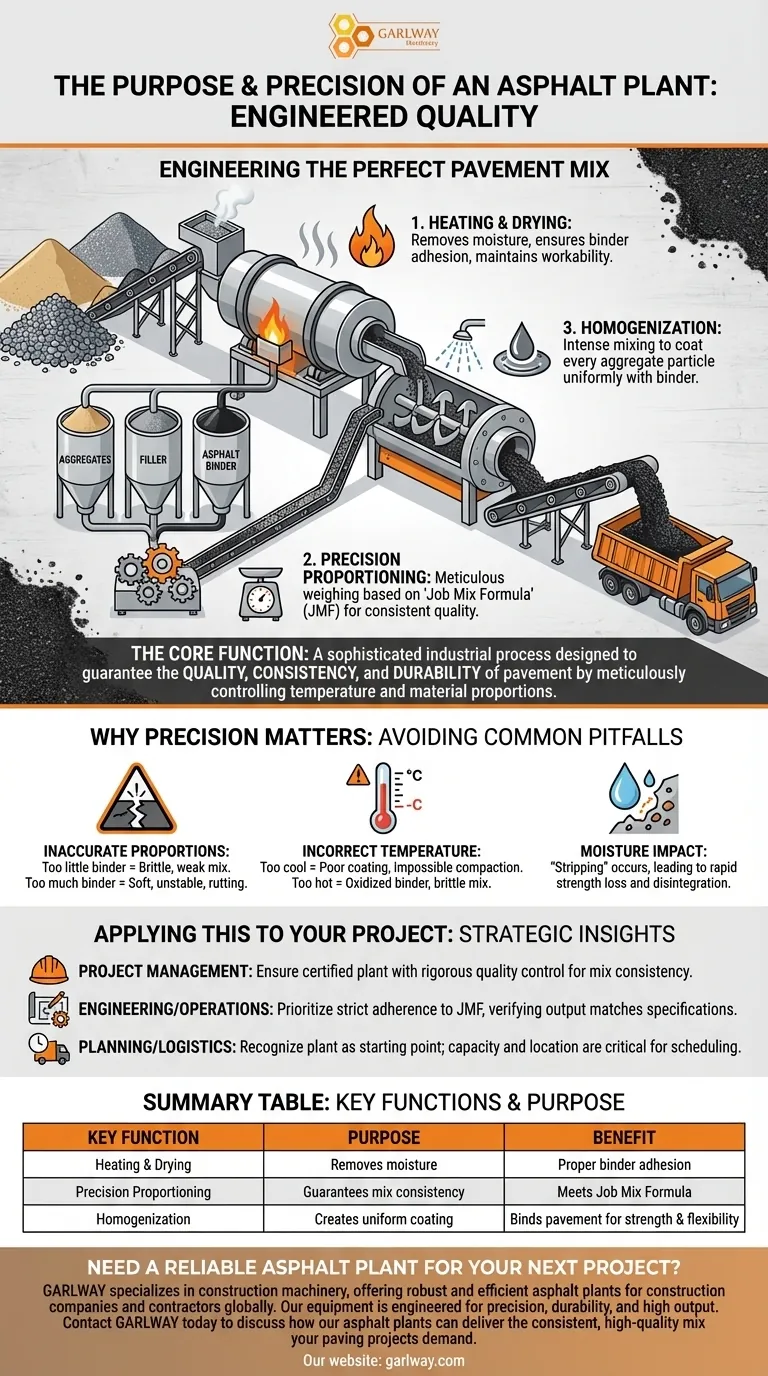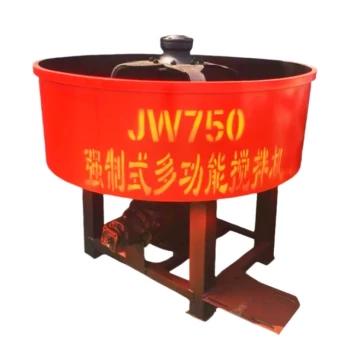An asphalt plant's primary purpose is to heat and combine aggregates, filler, and asphalt binder in highly specific proportions to produce a uniform, durable mixture known as hot mix asphalt, the material used for paving roads. The entire process is engineered to ensure the final product meets strict quality and performance standards.
The core function of an asphalt plant is not merely mixing; it is a sophisticated industrial process designed to guarantee the quality, consistency, and durability of pavement by meticulously controlling temperature and material proportions.

How an Asphalt Plant Ensures Quality Pavement
The creation of asphalt is a precise science. The plant acts as a large-scale industrial facility where raw components are transformed into a highly engineered construction material. Each step is critical to the final performance of the road surface.
The Critical Role of Heating and Drying
Before any mixing occurs, the aggregates (the sand, gravel, and crushed stone that form the bulk of the mixture) are heated to a high temperature.
This step serves two essential purposes. First, it completely removes any moisture from the aggregates. Water is an enemy of asphalt, as it prevents the liquid asphalt binder from properly adhering to the stone, which can lead to premature pavement failure.
Second, heating the aggregates ensures that when the cooler asphalt binder is introduced, the overall temperature of the mix remains high enough to keep it workable for transport and paving.
Precision Proportioning of Materials
Asphalt is not a simple recipe. The specific ratio of different aggregate sizes, filler, and asphalt binder is dictated by a "job mix formula" (JMF) designed by engineers for specific traffic loads and climate conditions.
The plant's control system is responsible for weighing or metering these components with extreme accuracy. This ensures that every batch of asphalt produced has the exact properties required for its intended use.
The Homogenization Process
Once the heated, dry aggregates and fillers are correctly proportioned, they are introduced into a mixing chamber (like a pugmill or drum). Here, the hot, liquid asphalt binder is sprayed and intensely mixed with the solids.
The goal is to ensure every single particle of aggregate is completely and uniformly coated with a thin film of asphalt binder. This complete coating is what binds the pavement together, giving it strength and flexibility.
Common Pitfalls and Why Precision Matters
The highly controlled environment of an asphalt plant exists to prevent common failures in pavement. Any deviation from the precise formula or process can have significant consequences for the road's lifespan and safety.
Inaccurate Proportions
If the ratio of asphalt binder to aggregate is incorrect, the pavement will fail. Too little binder results in a brittle, weak mix that cracks easily. Too much binder creates a soft, unstable pavement that is prone to rutting and deformation under traffic.
Incorrect Temperature
Mixing at the wrong temperature can ruin the final product. If the mix is too cool, the binder will be too viscous to coat the aggregate properly, and the material will be impossible to compact on the road. If it is too hot, the binder can be "burned" or oxidized, making it brittle and shortening its effective life.
The Impact of Moisture
Even small amounts of moisture left in the aggregates can cause "stripping," a condition where the asphalt binder peels away from the stone over time. This leads to a rapid loss of strength and the eventual disintegration of the pavement surface.
Applying This to Your Project
Understanding the plant's purpose provides insight into what truly matters for a successful paving project. The focus must always be on the quality and consistency of the material being produced.
- If your primary focus is project management: Ensure your asphalt supplier has a certified and well-maintained plant with a rigorous quality control program to guarantee mix consistency.
- If your primary focus is engineering or operations: Your priority is the strict adherence to the job mix formula, verifying that the plant's output consistently matches the specified temperatures and material proportions.
- If your primary focus is planning and logistics: Recognize that the asphalt plant is the starting point of a time-sensitive operation; its production capacity and location are critical factors in scheduling the entire paving process.
Ultimately, the asphalt plant is the manufacturing center that turns raw geological materials into a reliable and long-lasting engineered surface.
Summary Table:
| Key Function | Purpose |
|---|---|
| Heating & Drying | Removes moisture and ensures proper binder adhesion. |
| Precision Proportioning | Guarantees mix consistency according to the job mix formula. |
| Homogenization | Creates a uniform coating of binder on all aggregate particles. |
Need a reliable asphalt plant for your next project?
GARLWAY specializes in construction machinery, offering robust and efficient asphalt plants for construction companies and contractors globally. Our equipment is engineered for precision, durability, and high output, ensuring your projects meet the strictest quality standards.
Contact GARLWAY today to discuss how our asphalt plants can deliver the consistent, high-quality mix your paving projects demand.
Visual Guide

Related Products
- HZS180 Ready Mix Concrete Plant for Foundations with Sand and Cement
- HZS75 Concrete Batching Plant Cement Mixer Price Concrete Mixer Bunnings Mixing Plant
- HZS35 Small Cement Concrete Mixing Batch Plant
- Harbor Freight JS1500 On Site Concrete Mixing Volumetric Cement Mixer
- HZS120 Ready Mix Concrete Batching Plant Commercial Mud Cement Mixer
People Also Ask
- What are the disadvantages of ready mixed concrete? Navigate Logistical & Cost Risks
- What are the factors influencing choice of a concrete mixing plant? Key Considerations for Efficiency
- What are the advantages of a concrete plant? Achieve Consistent Quality & Efficiency for Large-Scale Projects
- How much does a batching plant cost? Uncover the True Investment for Your Project
- What are the advantages of ready mix concrete? Higher Quality, Efficiency & Cost Savings

















